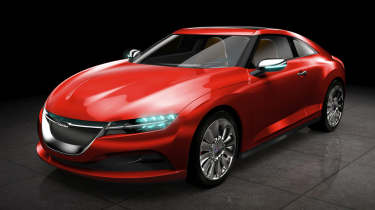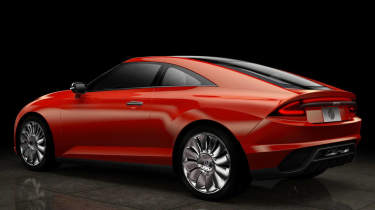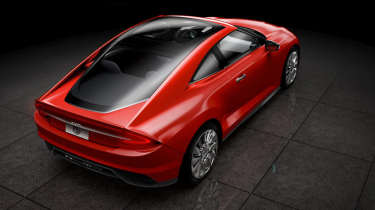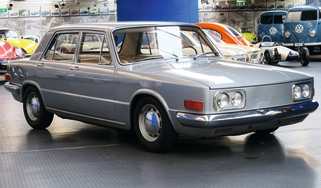Saab PhoeniX – dead on arrival
The Swedish brand’s failed 2010s revival meant we missed out on a 400bhp hybrid TT rival – and more
In 2009 General Motors decided it wanted out of Saab after 20 tricky years in charge, so attempted to sell the company its product boss, Bob Lutz, once described as ‘decidedly weird’. The resulting cat’s cradle of fiscal shenanigans involved a near sale to Koenigsegg, a bid endorsed by Bernie Ecclestone and a threat to simply shutter the place, before a last-minute deal was struck with Spyker in January 2010.
Improbable though it seemed that a tiny sports car maker could turn around the ailing Saab, the Dutch company didn’t waste any time in proving it was serious. In June 2010 it hired former Pininfarina designer Jason Castriota to style its future cars and three months later it signed an engine deal with BMW to power them. But not to power them entirely. Under the new Saab-Spyker plan the 1.6-litre turbocharged four from various Minis would drive the front wheels, assisted by an electric motor on the rear axle which would be designed and built in another joint venture, this time with ZF.
> Mercedes-Benz C112 – dead on arrival
Initially Saab planned to fit this new tech to a development of the GM Epsilon platform, as found under the second-generation 9‑3, but once Spyker’s R&D programme surged forwards it became clear that the scale and scope of Saab’s changes essentially meant a brand new platform. Colleagues from lorry maker Scania were consulted to help make the thing as modular and scalable as possible to give it a long, upgradeable life and scope for models large and small to be based upon it. With worrying echoes of the name chosen by the doomed consortium that bought Rover in 2000, this new platform was called Phoenix.
In March 2011, Saab used the Geneva motor show to display a concept based on its new hardware. Also called PhoeniX (but with a capital letter at the end, as if GM had left Saab with a dicky caps lock), it had a 200bhp BMW turbo four at the front, another 34bhp from an electric motor at the rear, and a body that previewed the ‘aeromotional’ styling proposed for the future showroom Saabs.
This wasn’t scissor-doored vapourware either, because behind the scenes real work was going on. In the early months of 2011 there were multiple sightings of engineering mules based on current-shape 9‑3s testing in southern Europe and northern Sweden, while within the design studio the look of the new Saabs was quickly coming together.
First out of the block would be an all-new 9-3 hatchback, followed by a saloon and cabrio. More excitingly, Castriota’s team also drew up a two-door, 2+2 coupe, a little larger than an Audi TT, which would take the PhoeniX concept look to the street using the old Saab Sonett name from the 1950s and ‘60s. With a Mini Cooper S engine boosted by a far-sighted hybrid system it would have, rumours said, up to 400 horsepower and sounded an intriguing prospect. Sadly, it was not to be.
Even as the PhoeniX concept was being paraded about it became uncomfortably clear that Saab was gasping for breath, with stories of unpaid suppliers and desperate attempts to make deals with Chinese companies – both eerie echoes of the dying days of MG Rover. In December 2011 the company filed for bankruptcy. Work on the Phoenix projects continued right up until this point, and even beyond it, as the receivers tried to sell the company and/or the platform to another car maker. In the end a Chinese consortium calling itself New Electric Vehicle Sweden bought up Saab and claimed it would launch an EV based on the old 9‑3 while developing an electric version of the Phoenix. To date, nothing more has been seen of it, nor indeed the Saab name on cars.
This story was first featured in evo issue 303.









